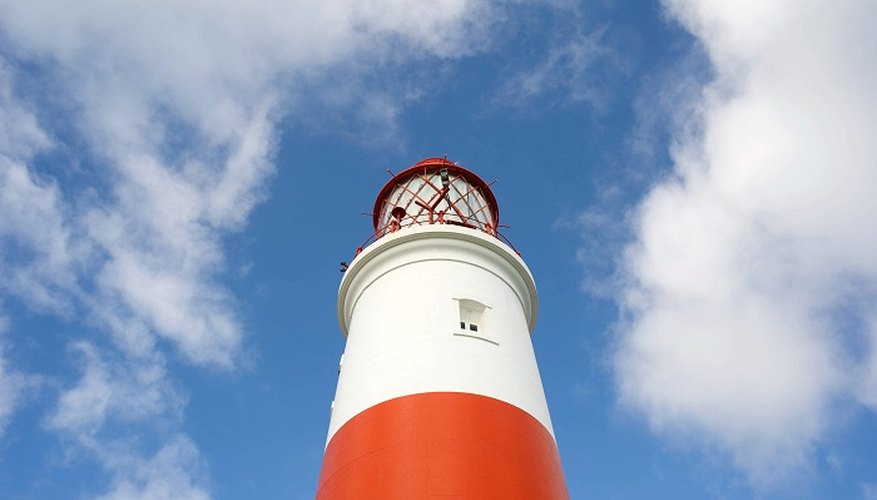Lighthouses capture the imagination of children and adults alike. Lighthouses make a terrific science project as they cover optics, navigation and engineering. They also demonstrate civil defence and maritime safety in action. Building a lighthouse also encourages children to think about conservation and the historical significance of buildings. They also emphasise how technology is changing our lives as GPS rapidly renders lighthouses obsolete.
Pre-school projects
Although many children at this age do not get to participate in science classes, they can use a simple torch and lens as a good project to emphasise the function of lighthouses and how they work. Have the child turn off the lights and demonstrate how the torch beam is altered in the lens. The child can turn as he is holding the lens to understand how a moving light is more noticeable than one that is stationary. A mirror can also help children understand how lighthouse optics are intensified without the use of a more powerful light.
- Although many children at this age do not get to participate in science classes, they can use a simple torch and lens as a good project to emphasise the function of lighthouses and how they work.
- The child can turn as he is holding the lens to understand how a moving light is more noticeable than one that is stationary.
Primary school projects
Demonstrate how a lighthouse is built to withstand great winds and other weather conditions. Help your school pupil to construct a working lighthouse by building one on his own. This project calls for various materials, including straight pins, so it will require adult supervision. You will also need a spool of thread, 30 cm (1 foot) square of plywood, glue, rulers, pencils and a cylindrically shaped object on which to build your lighthouse around, effectively demonstrating the way the air flows around such a project. Once finished, demonstrate how the air flows around the project with a bit of smoke and a fan -- a blown out candle will work for a quick demonstration. Discuss the velocity and the variables of the air flow and how the design helps accommodate both.
- Demonstrate how a lighthouse is built to withstand great winds and other weather conditions.
- You will also need a spool of thread, 30 cm (1 foot) square of plywood, glue, rulers, pencils and a cylindrically shaped object on which to build your lighthouse around, effectively demonstrating the way the air flows around such a project.
Secondary school lighthouse project
As secondary school students are made more aware of the scientific principles involved in architectural design and the nature of our weather cycles, lighthouse projects are ideal for incorporating the principles of design involved in withstanding great storms. They're also great for demonstrating how lighthouse architecture is different around the globe according to the demands placed on the lighthouse due to the weather. Students can demonstrate and examine how lighthouses are situated -- whether it be on rocky outcrops, stilts or platforms and adjusted according to the needs of the local mariners. Have students construct a series of lighthouses that demonstrate these principles.
- As secondary school students are made more aware of the scientific principles involved in architectural design and the nature of our weather cycles, lighthouse projects are ideal for incorporating the principles of design involved in withstanding great storms.
Sixth form lighthouse redesign project
Lighthouses today are quickly being replaced with satellite navigation known as GPS, or Global Positioning Systems. A great project to demonstrate the changing role of lighthouses in today's world is to show how ships now navigate without the use of lighthouses and show how today's modern navigation equipment works. Contact your local Coast Guard and ask if students can interview a representative who can perhaps bring GPS equipment to the science class for a demonstration. The talk can include the modern preservation of lighthouses and how the UK Coast Guard still takes care of the lenses and maintains their primary functions.
- Lighthouses today are quickly being replaced with satellite navigation known as GPS, or Global Positioning Systems.
- The talk can include the modern preservation of lighthouses and how the UK Coast Guard still takes care of the lenses and maintains their primary functions.
